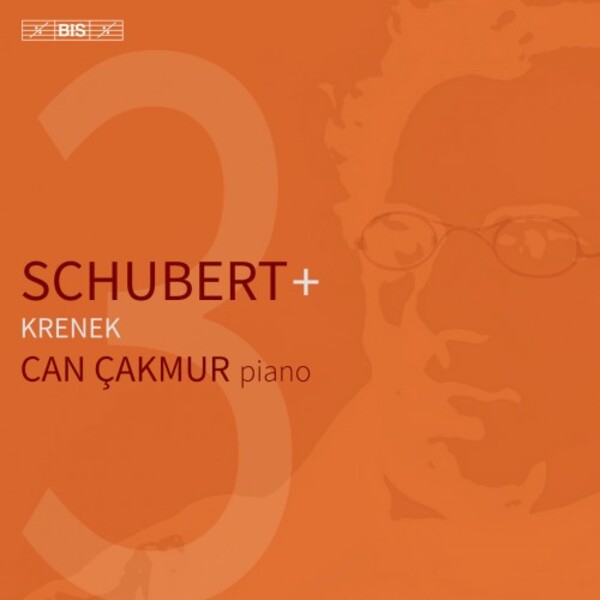SCHUBERT; KRENEK Piano Works (Can Çakmur)
View record and artist detailsRecord and Artist Details
Genre:
Instrumental
Label: BIS
Magazine Review Date: 07/2024
Media Format: Super Audio CD
Media Runtime: 68
Mastering:
DDD
Catalogue Number: BIS2690

Tracks:
| Composition | Artist Credit |
|---|---|
| Piano Sonata No. 2 |
Ernst Krenek, Composer
Can Çakmur, Piano |
| Sonata for Piano No. 15, 'Relique' |
Franz Schubert, Composer
Can Çakmur, Piano |
| Allegretto |
Franz Schubert, Composer
Can Çakmur, Piano |
| Ungarische Melodie |
Franz Schubert, Composer
Can Çakmur, Piano |
Author: Peter J Rabinowitz
Schubert’s 1825 Sonata in C, D840, was left in tatters: the first two movements are complete, but there’s a hole before the Trio in the third, and the finale dissolves midway. Most performers sidestep the textual problem by sticking to the two finished movements, thus cheating us of some shocking harmonic audacity (the wild Minuet teeters between the keys of A flat and A). A few, in contrast – including Richter (Decca) and Gothóni (Ondine) – play the score as Schubert left it. Finally, some turn to completions, of which there are a surprising number. The most audacious I’ve heard is William Bolcom’s, championed by Llŷr Williams (Signum); but the most famous is probably Ernst Krenek’s, from 1921.
That’s the edition Can Çakmur chooses for this instalment of his ‘Schubert+’ series, which presents Schubert’s major piano output set off against music by other composers. It’s an inspired choice when paired with Krenek’s 1928 Second Sonata – although the pairing tells us more about Krenek’s paradoxical artistry than about Schubert. For when juxtaposed, the two sonatas provide a distillation of Krenek’s grasshopper spirit, which touched on a bewildering variety of styles.
In his completion of D840, we hear Krenek merging with Schubert in an act of focused self-abnegation. Paul Badura-Skoda insisted that the seams between Schubert and Krenek are too obvious; but Çakmur is closer to the mark when he says he ‘would find it difficult to spot where Schubert ends and Krenek begins if it wasn’t specified in the score’. Paradoxically, though, while the hyphenated Schubert sounds like the work of a single composer, the single-authored Krenek Second sounds like a group project in which Prokofiev, Puccini, Joplin and even Schubert have all had a hand.
Much as I admire Maria Yudina’s relentlessly serious reading of the Krenek (Melodiya), Çakmur navigates its jolts with more wit. More generally, throughout all four works, he offers attentive dynamics (especially at the quiet end), rich but never garish colours, sensitivity to harmonic nuance (try the sumptuous Moderato of Krenek’s first movement), and the ability to layer voices with different articulations. The more secretive music (say, the Schubert Allegretto) can stir you deeply. But Çakmur’s playing has plenty of vigour, too: his handling of rhythmic quirks can knock you off balance; whiplash grace notes can shock you; and the upbeat finale of the Krenek will leave you smiling. Fully engaging.
Discover the world's largest classical music catalogue with Presto Music.

Gramophone Digital Club
- Digital Edition
- Digital Archive
- Reviews Database
- Full website access
From £8.75 / month
Subscribe
Gramophone Full Club
- Print Edition
- Digital Edition
- Digital Archive
- Reviews Database
- Full website access
From £11.00 / month
Subscribe
If you are a library, university or other organisation that would be interested in an institutional subscription to Gramophone please click here for further information.




